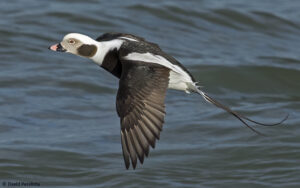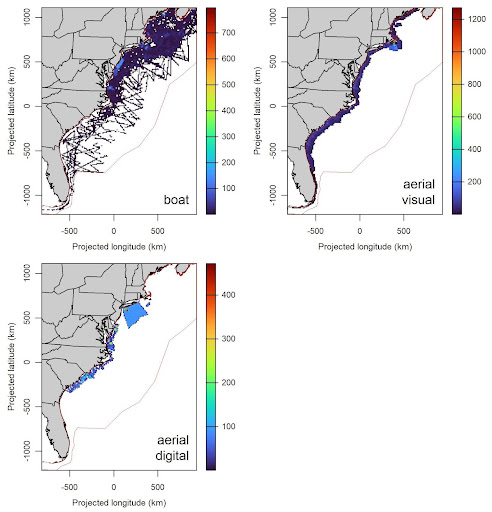To inform the sustainable development of offshore wind energy on the United States’ Atlantic Outer Continental Shelf (OCS), a recent study sheds light on the spatial and temporal distributions of marine bird species in the region. Led by experts from the National Centers for Coastal Ocean Science (NCCOS), the study offers critical data aimed at minimizing potential environmental impacts to marine birds.

With the growth of offshore wind energy, the need to understand and mitigate its effects on marine ecosystems has become increasingly important. The Bureau of Ocean Energy Management (BOEM) is responsible for overseeing renewable energy projects in the OCS and needs precise information on marine species distributions to guide planning and minimize ecological disruptions.
The study, “Modeling the Distributions of Marine Birds at Sea to Inform Planning of Energy Development on the US Atlantic Outer Continental Shelf,” analyzes decades of bird sighting data, employing advanced modeling techniques to analyze past trends and project future distributions. By incorporating data from surveys conducted from the 1990s to now, including aerial digital data, the study aims to provide insights into the dynamic nature of bird populations in the region.
Key findings from the study reveal significant variations in the spatial (across areas of the ocean) and temporal (across times of the year) distributions of marine bird species. Researchers identified 49 species representing sightings of over 2 million individual birds, with notable species including Northern Gannet, Herring Gull, Great Black-backed Gull, Common Loon, and Great Shearwater.

The modeling framework employed in the study used a range of environmental variables, including sea surface temperature and wind patterns, to predict bird densities across the study area. Through the use of Generalized Additive Models (GAMs), researchers were able to capture complex relationships between bird density and environmental conditions, providing valuable insights for decision-makers.
One of the study’s key contributions is its focus on future projections, considering potential environmental changes due to climate variability. By integrating climate change models, researchers were able to forecast how marine bird distributions might evolve over the next 30 years, offering critical information for long-term planning and management strategies.
However, the study also highlights certain limitations and uncertainties associated with the modeling approach. Challenges such as overfitting, limited survey coverage, and uncertainties in environmental data underscore the need for cautious interpretation of the findings.
Despite these challenges, the study represents a significant step forward in understanding the complex interactions between offshore wind energy development and marine bird populations. By providing policymakers and stakeholders with robust data and insights, the study aims to support the sustainable growth of renewable energy while safeguarding the ecological integrity of the US Atlantic OCS.
Moving forward, researchers emphasize the importance of continued updates and integration with new data sources to enhance the accuracy and applicability of the models. By refining our understanding of marine bird distributions, we can better balance energy development with the conservation of our precious coastal ecosystems.
